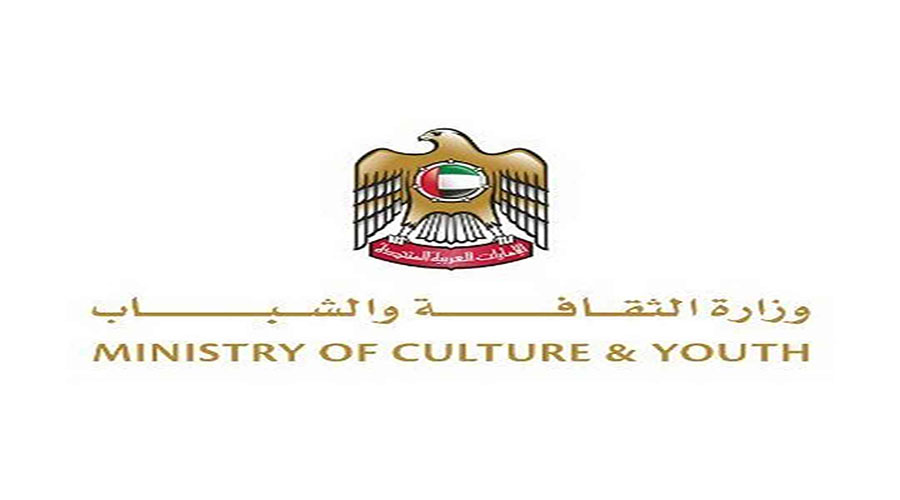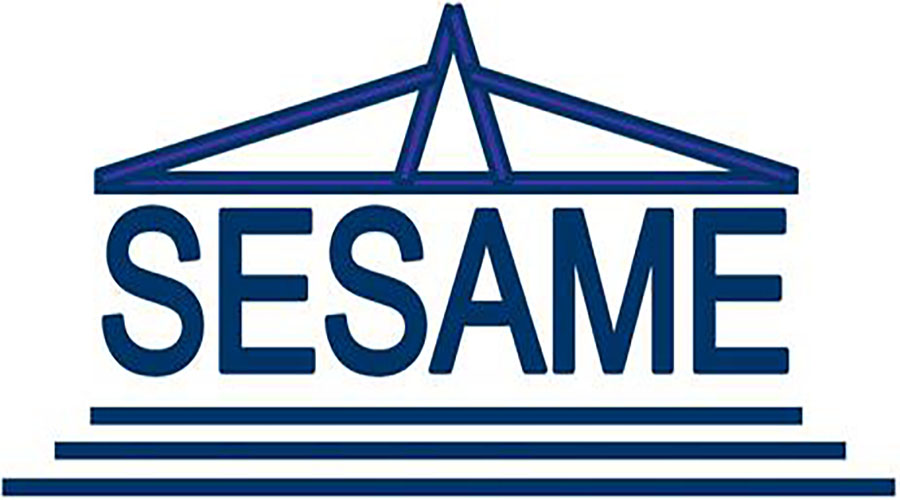UAE Joins International Center for Synchrotron-Light for Experimental Science and Applications in the Middle East (SESAME) as Member with Observer Status
• Synchrotron rays are used in a range of applications and industries such as pharmaceuticals, biotechnology, automobiles and cosmetics
• They are also used in electronic imaging and medicine to treat malignant tumors with cyclotron rays, and in the study and understanding of archaeological manuscripts.
• Joining the center allows for the expansion of training in the fields of technology, engineering and mathematics, and enhances the efforts of the UAE to conduct research and develop world-leading future technology
United Arab Emirates, 20 December 2021 - The UAE has joined the International Center for Synchrotron-Light for Experimental Science and Applications in the Middle East (SESAME) as a member with observer status. The move will enable scientists, researchers and industrial entities in the UAE to use the center’s specialized laboratories to conduct research and develop local industrial capabilities, opening new horizons for the country on its scientific and industrial journey.
Her Excellency Noura bint Mohammed Al Kaabi, Minister of Culture and Youth, Chairperson of UAE Commission for Education, Culture and Science, confirmed that the UAE's accession to the membership of SESAME comes within the forward-looking vision of UAE’s leadership to support advanced industries and scientific research, and in recognition of its role in achieving the goals of sustainable development. Her Excellency noted that this achievement is central to the work of UAE Commission, which plays a vital role in highlighting the country’s achievements and enhancing its leadership position regionally and internationally – all of which is in line with UAE’s strategic focus on the fields of advanced science and technology.
Her Excellency indicated that this achievement will enhance the nation’s scientific capabilities and enable our scientific and industrial organizations to develop more creative solutions to challenges, and thus improve the competitiveness of the UAE in the field of scientific research.
Her Excellency Sarah bint Youssef Al Amiri, Minister of State for Advanced Technology, said: “This achievement is a result of the concerted efforts of the Emirates Scientists Council and the UAE National Commission for Education, Culture and Science. We are confident that this step will help meet the needs of the scientific community in the UAE and strengthen scientific cooperation at the regional level. The use of synchrotron facilities serves current and future R&D projects in fields like materials, medicine, archaeology, renewable energy and other scientific areas. As such, it is in line with the main strategic objectives of the Ministry of Industry and Advanced Technology to establish high-tech industries through research and development, and enhance the UAE’s position as a center for science, technology and knowledge exchange – while also recognizing the role of science in bringing together people from diverse backgrounds. This approach is underlined by the UAE’s Principles of the 50, which provide the guiding framework for government institutions for the next fifty years.”
Synchrotrons are particle accelerators that produce intense light with properties similar to laser beams that facilitate the study of materials with great precision – even down to the structure of a single cell. SESAME’s particle-accelerator microscope uses electric and magnetic fields to keep the particles spinning in place, helping researchers see super-resolution details ranging from plant diseases to cancer cells and ancient manuscripts.
In addition to advanced scientific research, synchrotron-light is used in a variety of applications and in many industries, such as pharmaceuticals, biotechnology, automobiles and cosmetics. It is also used in physics to study and measure the collision of particles with atoms of different materials such as iron and aluminium. Other uses include electronic imaging, the treatment of malignant tumors with cyclotron-light, and in the study and understanding of archaeological manuscripts.
Many entities in the UAE can benefit from this center, including universities and academic institutions. Researchers in materials science, bioengineering, cultural heritage, and other disciplines at Khalifa University, New York University in Abu Dhabi, and UAE University can now conduct research related to their specializations, while UAE industrial entities can benefit from the center’s capabilities. Oil companies, for instance, will be able to conduct geological analysis, analyze post-oil operations and improve extracted materials, while manufacturers will be able to improve domestic products and enhance their global competitiveness.
SESAME was conceived as an international facility for the benefit of the Middle East and North Africa (MENA) to help the region retain and attract scientific and engineering talent. It is the first regional center for scientific cooperation in the field of basic research and has become one of the most prominent examples of scientific diplomacy. Established under the patronage of UNESCO before becoming an independent international government organization in 2004, it currently has nine members and, with the addition of the UAE, 19 observer countries.
The UAE was warmly welcomed by the Council’s member states when it participated in its first meeting with the Center’s Board of Directors between December 1-2, 2021 in its capacity as an observer.
Her Excellency Noura bint Mohammed Al Kaabi, Minister of Culture and Youth, Chairperson of UAE Commission for Education, Culture and Science, confirmed that the UAE's accession to the membership of SESAME comes within the forward-looking vision of UAE’s leadership to support advanced industries and scientific research, and in recognition of its role in achieving the goals of sustainable development. Her Excellency noted that this achievement is central to the work of UAE Commission, which plays a vital role in highlighting the country’s achievements and enhancing its leadership position regionally and internationally – all of which is in line with UAE’s strategic focus on the fields of advanced science and technology.
Her Excellency indicated that this achievement will enhance the nation’s scientific capabilities and enable our scientific and industrial organizations to develop more creative solutions to challenges, and thus improve the competitiveness of the UAE in the field of scientific research.
Her Excellency Sarah bint Youssef Al Amiri, Minister of State for Advanced Technology, said: “This achievement is a result of the concerted efforts of the Emirates Scientists Council and the UAE National Commission for Education, Culture and Science. We are confident that this step will help meet the needs of the scientific community in the UAE and strengthen scientific cooperation at the regional level. The use of synchrotron facilities serves current and future R&D projects in fields like materials, medicine, archaeology, renewable energy and other scientific areas. As such, it is in line with the main strategic objectives of the Ministry of Industry and Advanced Technology to establish high-tech industries through research and development, and enhance the UAE’s position as a center for science, technology and knowledge exchange – while also recognizing the role of science in bringing together people from diverse backgrounds. This approach is underlined by the UAE’s Principles of the 50, which provide the guiding framework for government institutions for the next fifty years.”
Synchrotrons are particle accelerators that produce intense light with properties similar to laser beams that facilitate the study of materials with great precision – even down to the structure of a single cell. SESAME’s particle-accelerator microscope uses electric and magnetic fields to keep the particles spinning in place, helping researchers see super-resolution details ranging from plant diseases to cancer cells and ancient manuscripts.
In addition to advanced scientific research, synchrotron-light is used in a variety of applications and in many industries, such as pharmaceuticals, biotechnology, automobiles and cosmetics. It is also used in physics to study and measure the collision of particles with atoms of different materials such as iron and aluminium. Other uses include electronic imaging, the treatment of malignant tumors with cyclotron-light, and in the study and understanding of archaeological manuscripts.
Many entities in the UAE can benefit from this center, including universities and academic institutions. Researchers in materials science, bioengineering, cultural heritage, and other disciplines at Khalifa University, New York University in Abu Dhabi, and UAE University can now conduct research related to their specializations, while UAE industrial entities can benefit from the center’s capabilities. Oil companies, for instance, will be able to conduct geological analysis, analyze post-oil operations and improve extracted materials, while manufacturers will be able to improve domestic products and enhance their global competitiveness.
SESAME was conceived as an international facility for the benefit of the Middle East and North Africa (MENA) to help the region retain and attract scientific and engineering talent. It is the first regional center for scientific cooperation in the field of basic research and has become one of the most prominent examples of scientific diplomacy. Established under the patronage of UNESCO before becoming an independent international government organization in 2004, it currently has nine members and, with the addition of the UAE, 19 observer countries.
The UAE was warmly welcomed by the Council’s member states when it participated in its first meeting with the Center’s Board of Directors between December 1-2, 2021 in its capacity as an observer.
Did you find this content useful?
You can help us improve by providing your feedback about your experience.



